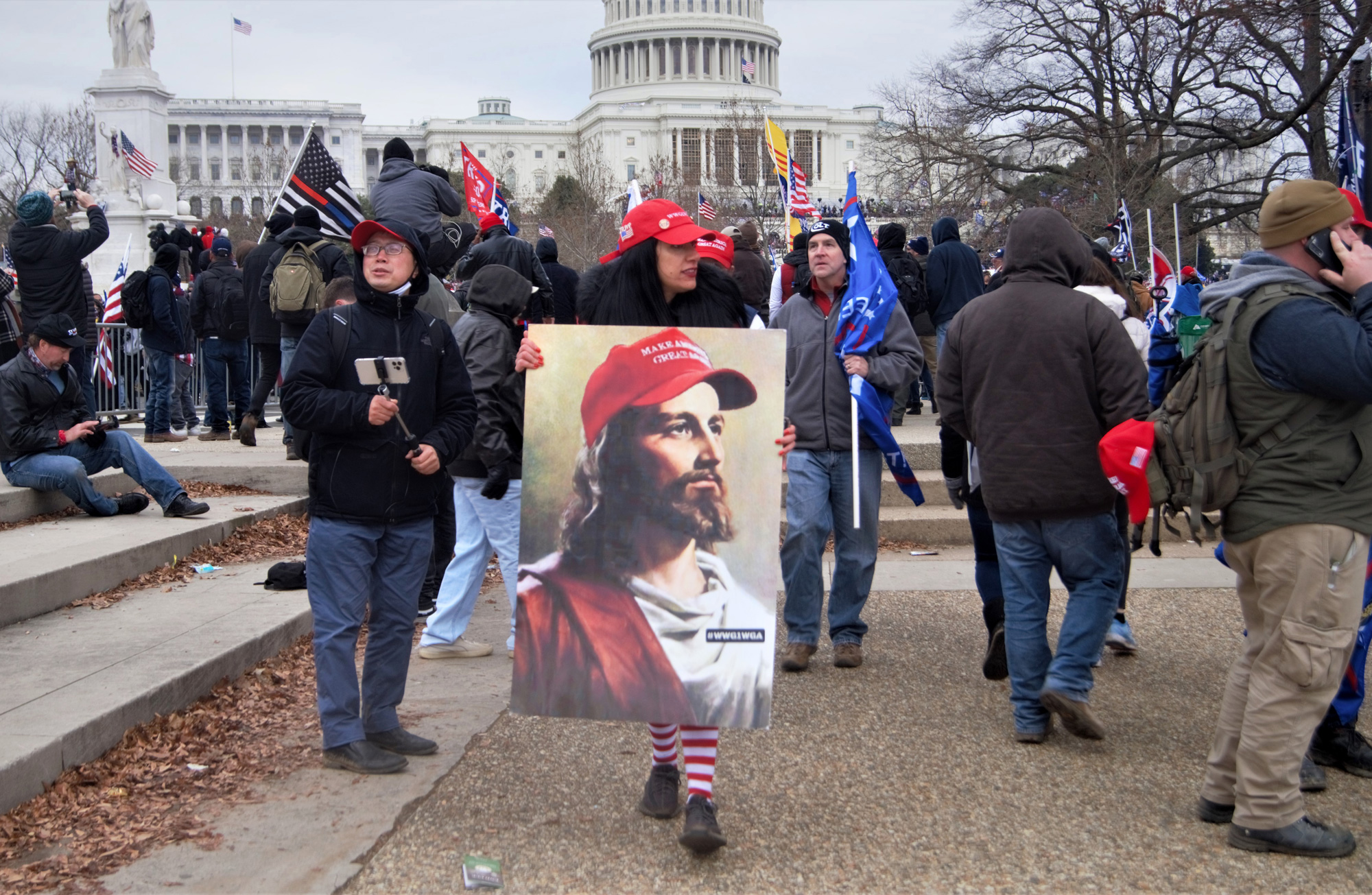Recognizing the significant presence of religion at the protest and subsequent riot on the U.S. Capitol last year, scholars at the University of Alabama’s Department of Religious Studies and the Smithsonian’s National Museum of American History have developed an online archive of digital media that represents the complex religious dimensions present that day. The materials collected on “Uncivil Religion” are accompanied by interpretive essays that provide analysis and context to “help us understand the ways that religion appeared and the roles religion played on that afternoon.”
The project’s directors, Michael Altman, Associate Professor in the Department of Religious Studies at the University of Alabama, and Jerome Copulsky, a consulting scholar at the National Museum of American History’s Center for the Understanding of Religion in American History, have worked for nearly a year curating this platform.
“There are two main points we hope this project makes clear,” said Altman. “First, religious identities, ideas, symbols, and rituals played an important role in the events of January 6. Religion was everywhere. It was on signs. I was in songs. It was in prayers. But beyond that, there was a real diversity of religion at the Capitol that day. It wasn’t just conservative Protestant Christianity. With the essays and the galleries on the website, we show how Mormonism, Catholicism, and even parody religions like Kek were also part of January 6. The events on January 6 were as religiously plural as the United States itself.”
Project advisor Peter Manseau, Director of the Center for Understanding Religion in American History at the National Museum of American History, added, “Immediately after the attack on the Capitol last year, it was clear the presence of religion was significant enough that it would warrant further study, both by future historians and students today learning about American religion and politics. We hope “Uncivil Religion” will serve as both a resource in college classrooms and as a foundation for further inquiries into the religious contexts and influences that led to January 6.”





